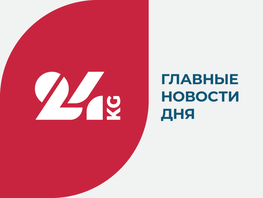Most medical students in Kyrgyzstan are foreigners. Nuripa Mukanova, Secretary General of the Anti-Corruption Business Council (ACBC), told at a press conference.
According to her, there are 22 higher education institutions in Kyrgyzstan, which have medical faculties where foreign students study.
«There are 28,239 foreigners studying at these 22 higher education institutions that is 77 percent of the total number of students. At least 7,901 of them are from near abroad countries and 20,388 — from far abroad,» she said.
Nuripa Mukanova added that most of the higher education institutions were opened in the last five years. «Before 2017, there were 7-8 medical schools and medical faculties in the country. The rest appeared in 2017-2019,» she noted.
According to her, opening of these faculties and schools shows that medical education is a profitable business. The cost per international student ranges from $2,000 to $3,000.
«At the same time, the institutions indicate the lower cost to pay less taxes — about $1,000. However, we cannot say that all this difference goes to the university. The lion’s share is taken by agents who bring the students to our country,» she said.
That’s why, she said, one of the ACBC’s recommendations is to set the minimum tuition fee for international students at all medical schools (faculties) at $3,000. «The tax base should come from that amount. This will actually bring these higher education institutions out of the shadows. In addition, it will contribute to the improvement of the infrastructure of universities, will lead to an increase in salaries of teachers and, at the same time, an increase in the requirements for knowledge of the teaching staff both in the field of medicine and a foreign language. It will also stop the current practice of dumping and eliminate tax evasion,» she said.
The Secretary General added that the large number of higher education institutions has not led to healthy competition. «Of all the universities, only six have their own clinical facilities. The rest make up an agreement with existing medical institutions. In addition, functioning of such a large number of universities is not welcomed by international accreditation educational commissions,» she said and added that there are requirements for teaching foreigners — the school must be internationally accredited. But only four out of 22 existing schools are included in the List A (which have this international accreditation), four more must undergo accreditation, they have been issued a temporary one for one year.
«Due to the fact that our universities do not have sufficient infrastructure, students do not have practical skills, that is, they do not have practice, but only study the theory, they can not then confirm their diplomas in their country,» Nuripa Mukanova said.
This happened with Pakistan, which in 2020 included all medical schools in Kyrgyzstan in the black list and did not recommend its citizens to enroll in them. Later it became known that four universities were transferred by the Pakistani side to the green list (List A).





